KrakenRF
Software Defined Radio
Environmental Sensing
KrakenRF
Software Defined Radio
Environmental Sensing
Discovery Dish is a 70-cm aluminum satellite dish with an active filtered feed. It is designed for receiving real-time weather data from GOES HRIT, GK-2A LRIT, FengYun LRIT, NOAA HRPT, Metop HRPT, Meteor M2 HRPT, and other weather satellites that operate around 1.69 GHz. The dish is designed to weigh under one kilogram and splits into three petals, making it easier to ship worldwide. The 1.69 GHz feed contains a built-in LNA and filter right at the feed point, which means there is almost no noise figure loss from cables or connectors. The feed electronics are encased in a waterproof enclosure, meaning no external waterproofing work is required. We also have feeds for 1.42 GHz hydrogen line radio astronomy and 1.5 GHz Inmarsat STD-C and AERO.
To amplify the weak signals transmitted by weather satellites, Discovery Dish incorporates the Qorvo QPL9547 high-linearity, ultra-low-noise amplifier in a small 2 x 2 mm surface-mount package.
We believe the most popular use case for Discovery Dish will be L-Band weather satellite reception via the use of our L-band weather satellite feed, which consists of a tuned linearly polarized dipole feed, two 5 V bias tee-powered LNAs, and two SAW filters (centered at 1680 MHz with 69 MHz of bandwidth), all enclosed in a waterproof enclosure. With this highly optimized feed, the 70-cm Discovery Dish has proven effective at receiving the GOES HRIT satellite signal with SatDump. We typically achieve SNR values of 3-4 dB to GOES-18 at an elevation of 24°. With SatDump, an SNR of +1 dB is approximately the minimum required to receive images, so there is plenty of margin. The Discovery Dish can easily receive LRIT from GK-2A and Fengyun and, when combined with an antenna rotator (or manual hand rotating), can also receive HRPT weather satellites.
In contrast to a Wi-Fi grid antenna, Discovery Dish is much easier to optimally set the offset skew as you can simply and accurately rotate the feed to the desired angle, versus having to dissaesmble and then rotate the entire assembly at 45° increments.
The L-band weather satellite feed is easily swapped out for other feeds which have different filter passbands, such as the 1.42 GHz hydrogen line feed we are offering for those wanting to get started with radio astronomy, and the 1.5 GHz Inmarsat feed for receiving STD-C and AERO signals in the 1525 - 1559 MHz bands.
Swapping the feed is a simple, two-minute job accomplished by unscrewing the coaxial cable strain relief, loosening a few set screws with a hex key, pulling out the feed arm, and reversing the process with the new feed arm.
Up until now, many people have relied on 60 cm x 100 cm Wi-Fi grid antennas for L-Band geosynchronous satellites and hydrogen line observation, but at 1.6+ kg these grid antennas are too heavy, wide, and exert too much torque for light duty antenna rotators to handle. At about half the weight of an equivalent Wi-Fi grid antenna, Discovery Dish is much easier to handle. We have tested Discovery Dish on the low-cost AntRunner antenna rotator, and our own prototype Discovery Dish rotator (mentioned further below).
Because the LNAs are adjacent to the feed, there is almost no loss from feed to LNA. This allows us to use thinner and less stiff cabling without any noise figure loss issues, since we have sufficient gain coming from the LNA. Discovery Dish comes with six meters of RG58 coaxial cable, which is a lot easier to handle and route compared to heavy, low-loss cables like LMR400, which is much stiffer, harder to route, and more likely to cause damaging strain to the components its connected to. While RG58 isn’t the lowest loss cabling available, there isn’t a need for lower-loss cabling since we have sufficient gain.
Other than Discovery Dish itself (which includes pole mounting hardware), and at least one of the feeds, the only other components you will need are a standard RTL-SDR Blog V3 or V4 dongle (available from RTL-SDR.COM) and a computing device like a PC, laptop, Raspberry Pi 4/5, or Orange Pi 5. You can then use open source software such as SatDump to decode the data from the satellite you point the dish at.
In an ideal setup, the dish is mounted on a pole, pointing towards your satellite of choice. The mount could be something like a lighting tripod stand, or a roof or wall antenna mount. The electronics enclosure which houses the single-board computer (SBC, like a Raspberry Pi 4/5 or an Orange Pi 5) and RTL-SDR is mounted further down the mast. The SBC and RTL-SDR could all be powered and networked by a PoE splitter or an outdoor plug.
Alternatively, the dish can be separately mounted and then connected to your PC/laptop with the provided six-meter coaxial cable.
Discovery Dish by itself comes with:
Required accessories (choose at least one):
Optional accessories:
The 1.69 GHz feed is designed for receiving GOES HRIT, GK-2A LRIT, FengYun LRIT, NOAA HRPT, Metop HRPT, Meteor M2 HRPT, and other weather satellites that operate around 1.69 GHz. With this feed, in conjunction with a Discovery Dish and software like SatDump, you can receive and decode beautiful live images from L-band weather satellites that are visible in your area.
By popular demand, we are offering a 1.5 GHz Inmarsat feed with a pass band of 1525 - 1660 MHz. With this feed, in conjunction with a Discovery Dish and open source software like Scytale-C and JAERO, you can receive and decode Inmarsat STD-C and AERO signals.
The 1.42 GHz feed is optimized for hydrogen line observations and radio astronomy experiments. A Discovery Dish and this 1.42 GHz feed will be one of the easiest radio astronomy projects to set up, making it great for radio astronomy beginners and educational institutions. With a 3D-printed adapter, this feed (and our other feeds) can also be used on other center-feed dishes, including 2.4 GHz Wi-Fi grid dishes.
We will produce an optional, fully die-cast aluminum, outdoor electronics enclosure that can be pole mounted. It can be used to hold a compute device like a Raspberry Pi/Orange Pi, an RTL-SDR, or other software-defined radio, and still have room enough for other power components, such as a PoE splitter. The metal enclosure is weatherproof and blocks any interference from the Raspberry Pi and PoE components, which could disturb the sensitive dish. The enclosure can also serve as a large heat sink with thermal pads that can be placed under the mounting sheet.
In our tests, we have been running an RTL-SDR Blog V4, Orange Pi 5, and Power over Ethernet (PoE) splitter in the enclosure, and running the SatDump GUI directly on the Orange Pi 5. This results in a neat contained system where only one Ethernet cable needs to be run to the enclosure from inside a building.
Pictured below is an example of how you might use your outdoor electronics enclosure. This photo shows equipment for our prototype Discovery Dish Antenna Rotator (mentioned further below), which is being run from the 12 VDC PoE splitter output. The Orange Pi 5 is being powered via a low-cost module that converts 12 VDC to 5 VDC. Because Discovery Dish is so lightweight, the light-duty antenna rotator motors don’t require high currents and can be powered with standard PoE.
When combined with an RTL-SDR or other common SDR, a Discovery Dish outfitted with an L-Band Weather Satellite Feed is fully compatible with established open source software packages for weather satellite decoding, such as SatDump and Goestools. Here are some screenshots of what we received using some of these tools:
For Inmarsat, you can use open source software such as Scytale-C for STD-C, Tekmanoid (paid close source), Inmarsat Decoder (paid closed source), and JAERO (open source) for AERO text and voice decoding.
Finally, for hydrogen Line observations, we recommend using SDR# (which is free, but not open source), and the AVE plugin. Instructions on setting this up are available on RTL-SDR Blog.
Before shipping, we plan on releasing comprehensive tutorials for L-band weather satellite reception, hydrogen line observations, and Inmarsat reception which will show how to set up the Discovery Dish and respective feed to make use of the aforementioned software.
The Discovery Dish will be the start of an ecosystem of hardware designed to get users set up with satellite reception.
Unlike the much heavier Wi-Fi grid dishes that are typically used, the lightweight design of Discovery Dish makes it suitable for a light-duty and low-cost (sub-$200) automatic antenna rotator, which we are currently in the very early stages of designing, and may release on Crowd Supply in the near future as a separate campaign. The rotator will be designed to be used outside with a Raspberry Pi or Orange Pi acting as the hamlib rotctl serial controller, enclosed further down the mount in the electronics enclosure. As mentioned, because Discovery Dish is so lightweight, we can use DC motors that work on the power available from standard PoE. Stay tuned for more information coming soon!
| Dicovery Dish | Wi-Fi grid antenna + LNA + cabling | NooElec GOES Bundle | |
|---|---|---|---|
| Weight & Size | < 1 kg, 70 cm diameter | 2 kg, 100 cm x 60 cm | 1.55 kg, 100 cm x 60 cm |
| Suitable for light-duty rotator? | YES | NO | NO |
| Easily adjustable skew? | YES | NO (45° increments only) | NO (45° increments only) |
| LNA electronics waterproofed? | YES | NO (left to user) | NO (left to user) |
More information can be found on the Discovery Dish wiki.
Once the first stage of crowdfunding is complete, we will begin producing the stamping moulds required to make the production version of the dish. We will simultaneously begin manufacturing the PCB feeds and feed housing. Once the stamped dish is tested, we will also begin making the injection moulded for the plastic mounting pieces.
After production, Discovery Dish and its accessories will be shipped to Crowd Supply’s fulfillment partner, Mouser Electronics, which will deliver to backers worldwide. Additional information about Crowd Supply’s fulfillment service can be found in the Ordering, Paying, and Shipping section of their guide.
As with any project there are risks with the supply chain. However, the parts we are using in the electronics are common and well stocked. Barring a global supply chain problem, we forsee no issues in component sourcing. Many of the parts require custom injection moulded pieces, and there could be delays caused by poor moulding results. But we don’t expect any problems to add signficant delays.
Discovery Dish is part of Qorvo RF Accelerator
QPL9547TR7
· RF amplifier
enables RF range
Produced by KrakenRF in Chicago, IL and Auckland, New Zealand.
Sold and shipped by Crowd Supply.

A lightweight, 70 cm diameter parabolic reflector with pole/mast mounting bracket and feed guide. The reflector comprises three aluminum petals that require assembly with a screwdriver. This is the dish and mount only - make sure you combine it with a feed!
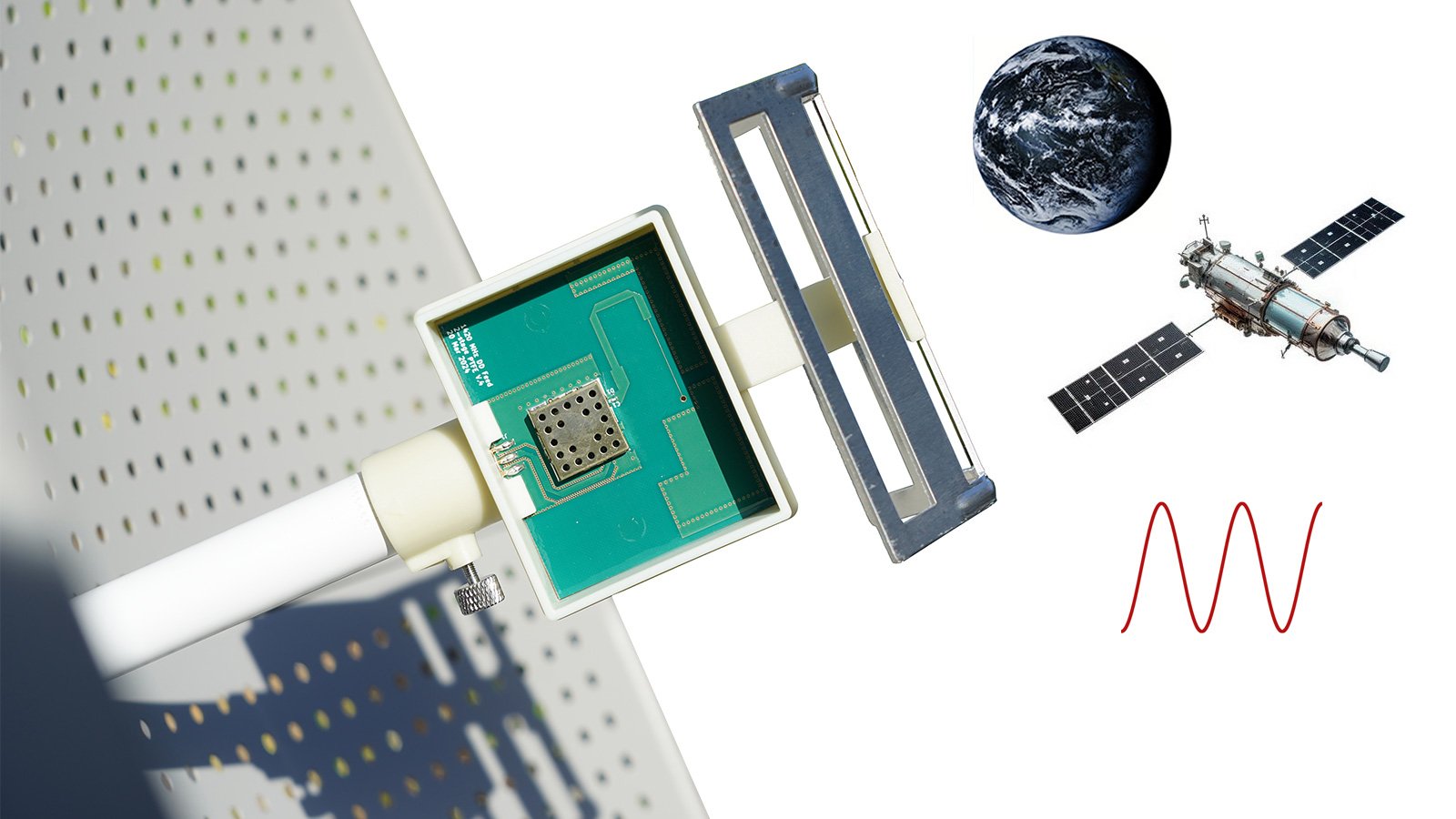
A 1.69 GHz active and filtered feed in a waterproof enclosure for receiving data from GOES HRIT, GK2A/FengYun LRIT, FengYun-2 S-VISSR, Elektro-L LRIT and polar-orbiting HRPT satellites. Includes the feed arm that fits into a Discovery Dish feed guide and six meters of LMR240-equivalent coaxial cable. Discovery Dish not included.
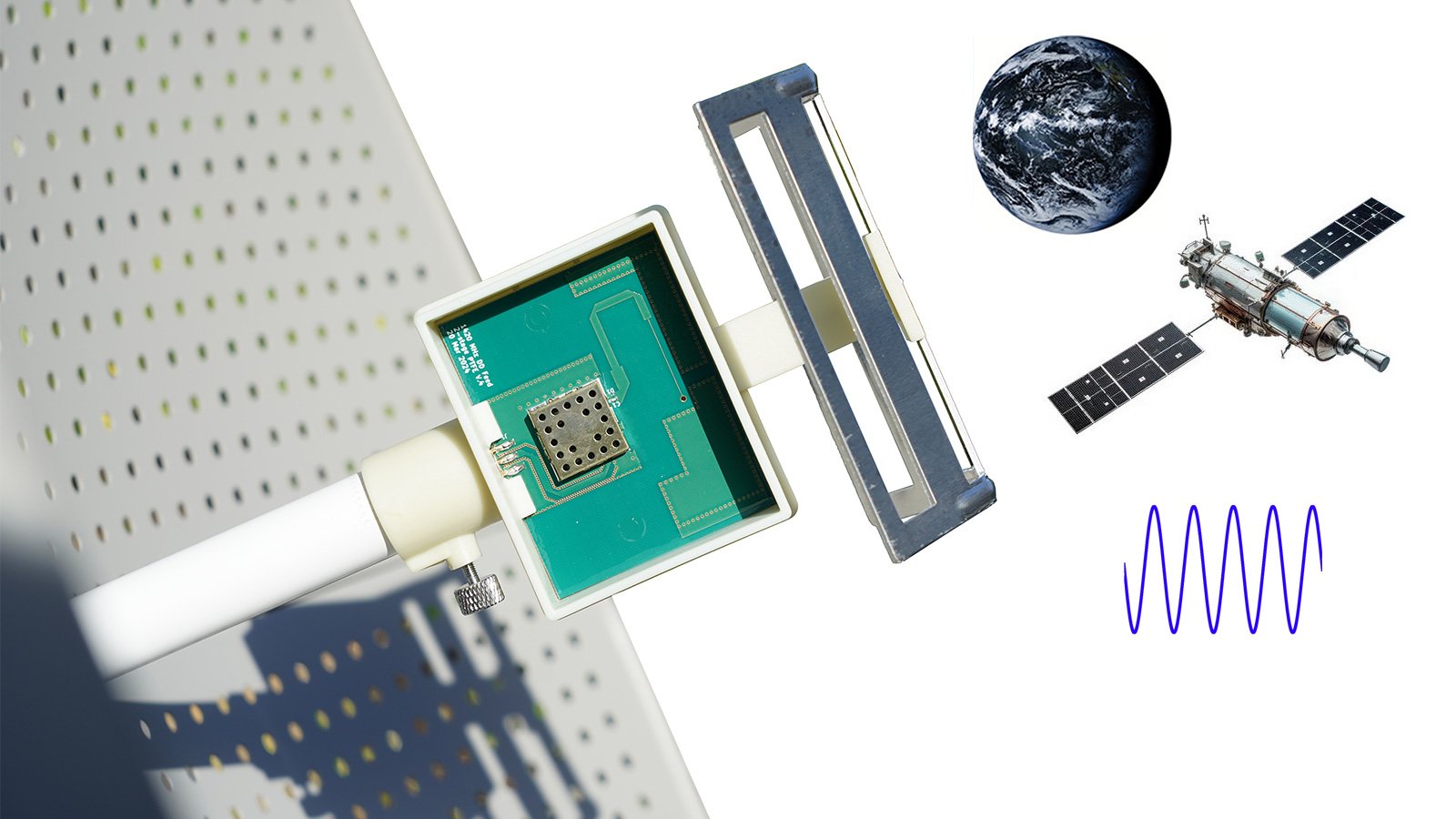
A 2.2 - 2.3 GHz active and filtered feed in a waterproof enclosure for receiving satellite data and telemetry downlinks. Includes the feed arm that fits into a Discovery Dish feed guide, as well as six meters of LMR240-equivalent coaxial cable. Discovery Dish is not included.
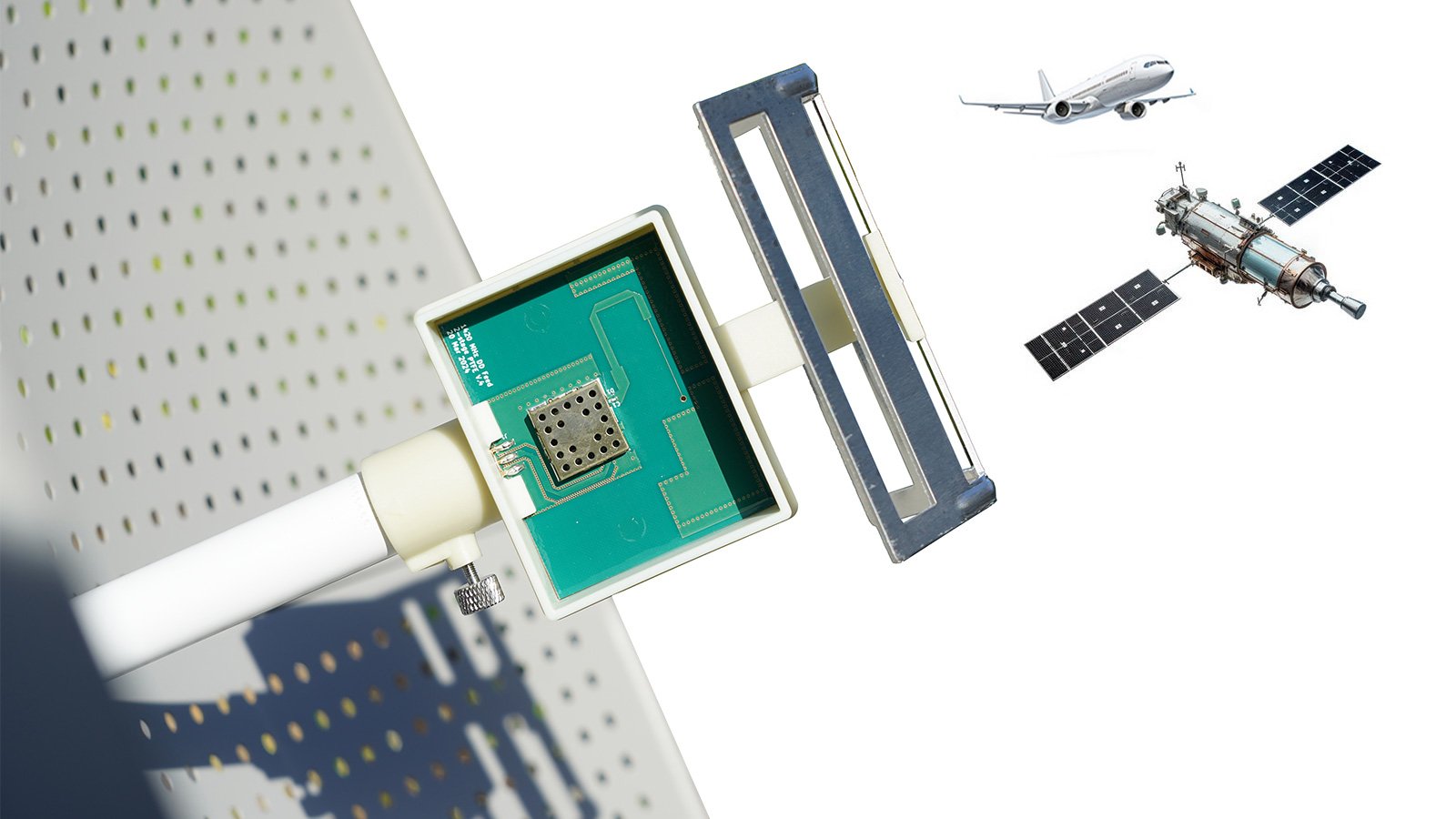
A 1.525 - 1.660 GHz active and filtered feed in a waterproof enclosure for receiving Inmarsat satellite signals like STD-C and AERO. Includes the feed arm that fits into a Discovery Dish feed guide and six meters of LM240-equivalent coaxial cable. Discovery Dish not included.

A 1.42 GHz active and filtered feed in a waterproof enclosure for hydrogen line radio astronomy observations. Includes the feed arm which fits into a Discovery Dish feed guide and six meters of LMR240-equivalent coaxial cable. Discovery Dish not included.
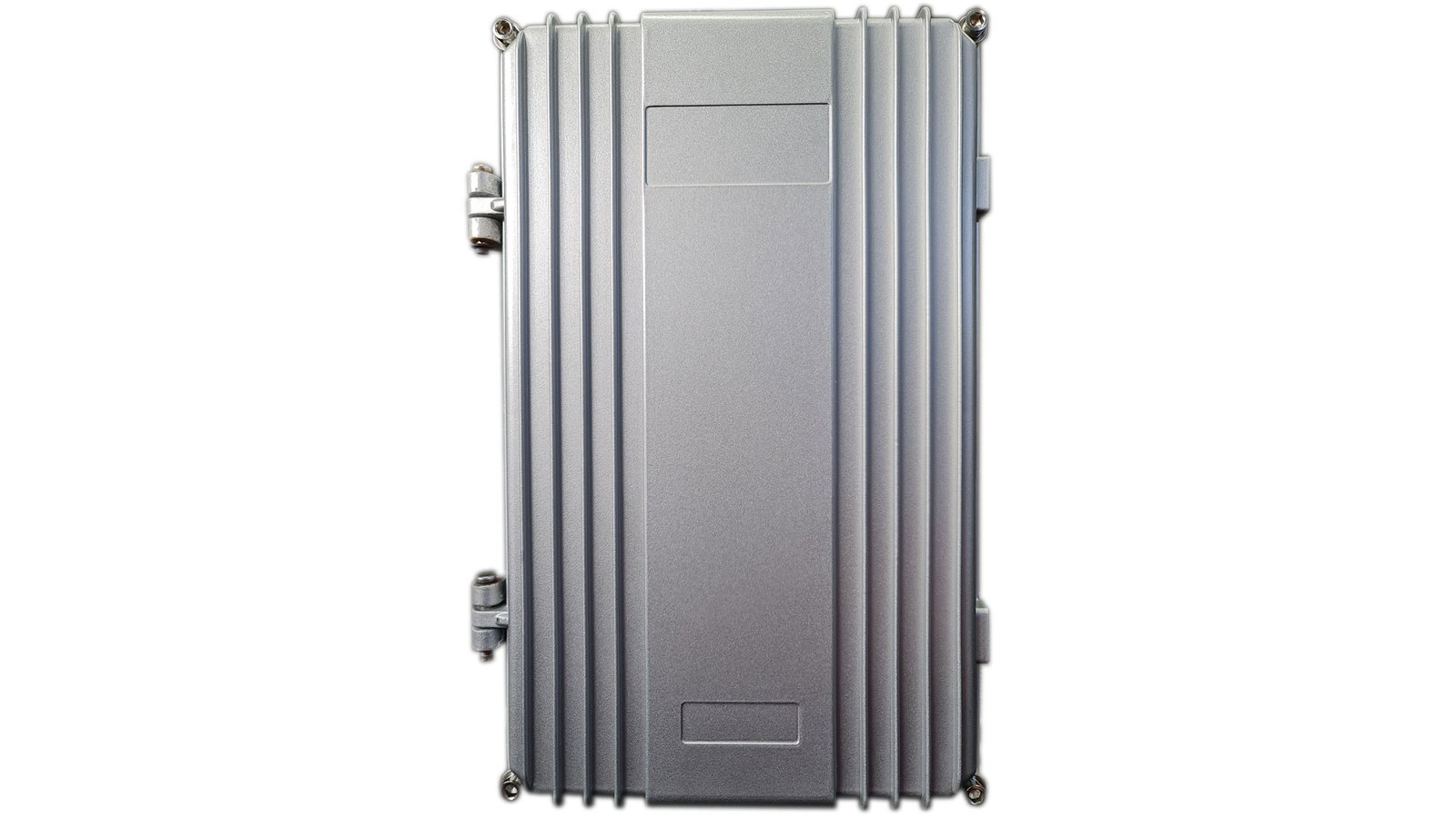
A die-cast aluminum enclosure for housing electronics compatible with Discovery Dish. This enclosure mounts to a pole with a diameter between 20 mm and 45 mm. The inner volume of the enclosure is 304 mm x 184 mm x 60 mm. A custom mounting plate provides a grid of mount points for various devices such as Raspberry Pi's, software-defined radios and PoE splitters to be securely housed inside the enclosure. Two 100mmx100mm thermal pad squares are also included to help sink the heat of internal electronics to the enclosure to ensure that they keep cool while enclosed. Three metal cable glands and one membrane air vent are included. The coaxial cable from a Discovery Dish feed can be routed through one of the cable glands on the bottom of the enclosure. A mast/pole mounting bracket and wall mounting bracket are included. The enclosure has an IP65-rated seal. Discovery Dish not included.


A phase-coherent software-defined radio with five RTL-SDRs
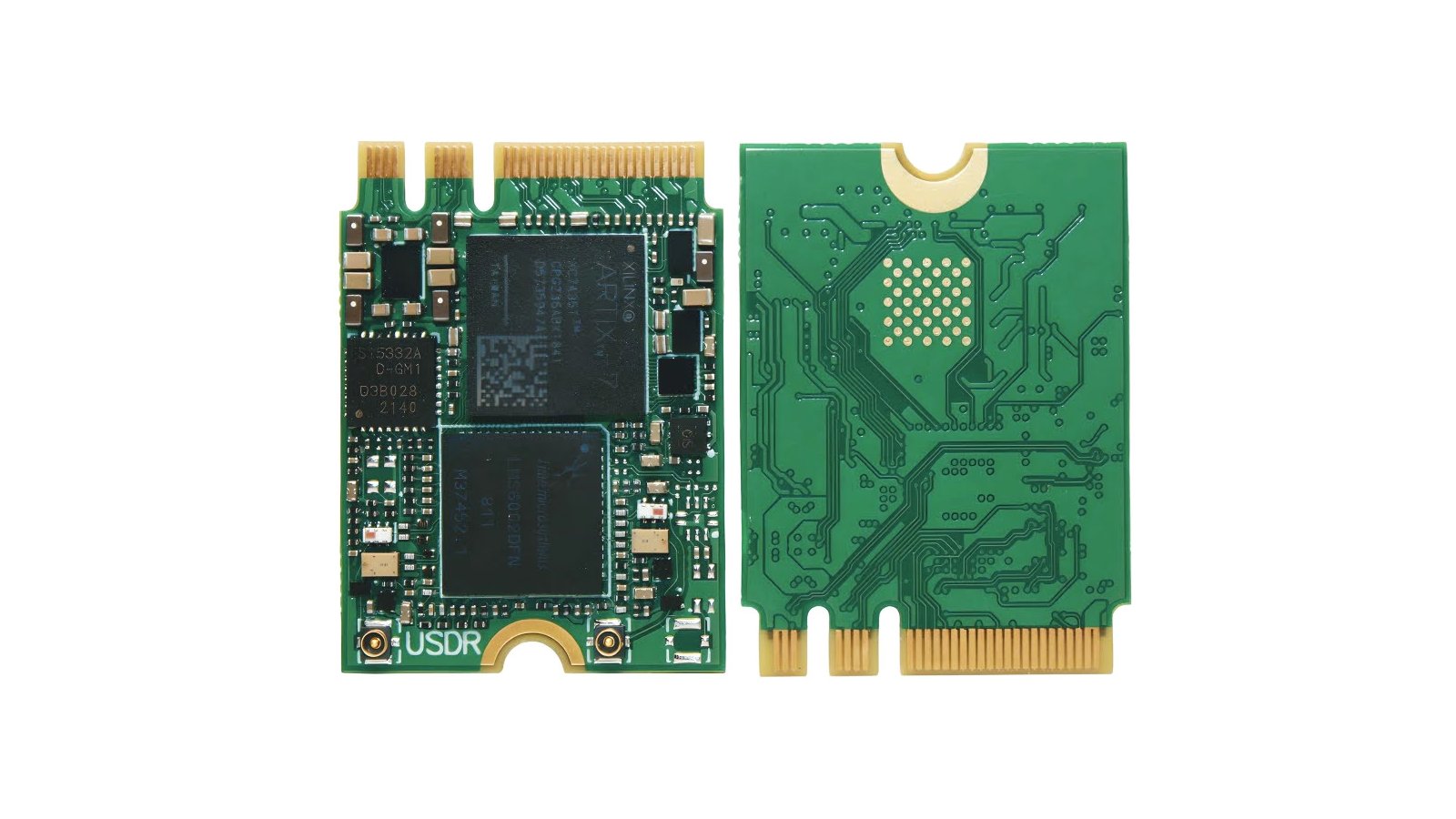
A tiny, single-sided M.2 SDR board that you can operate easily using your web browser
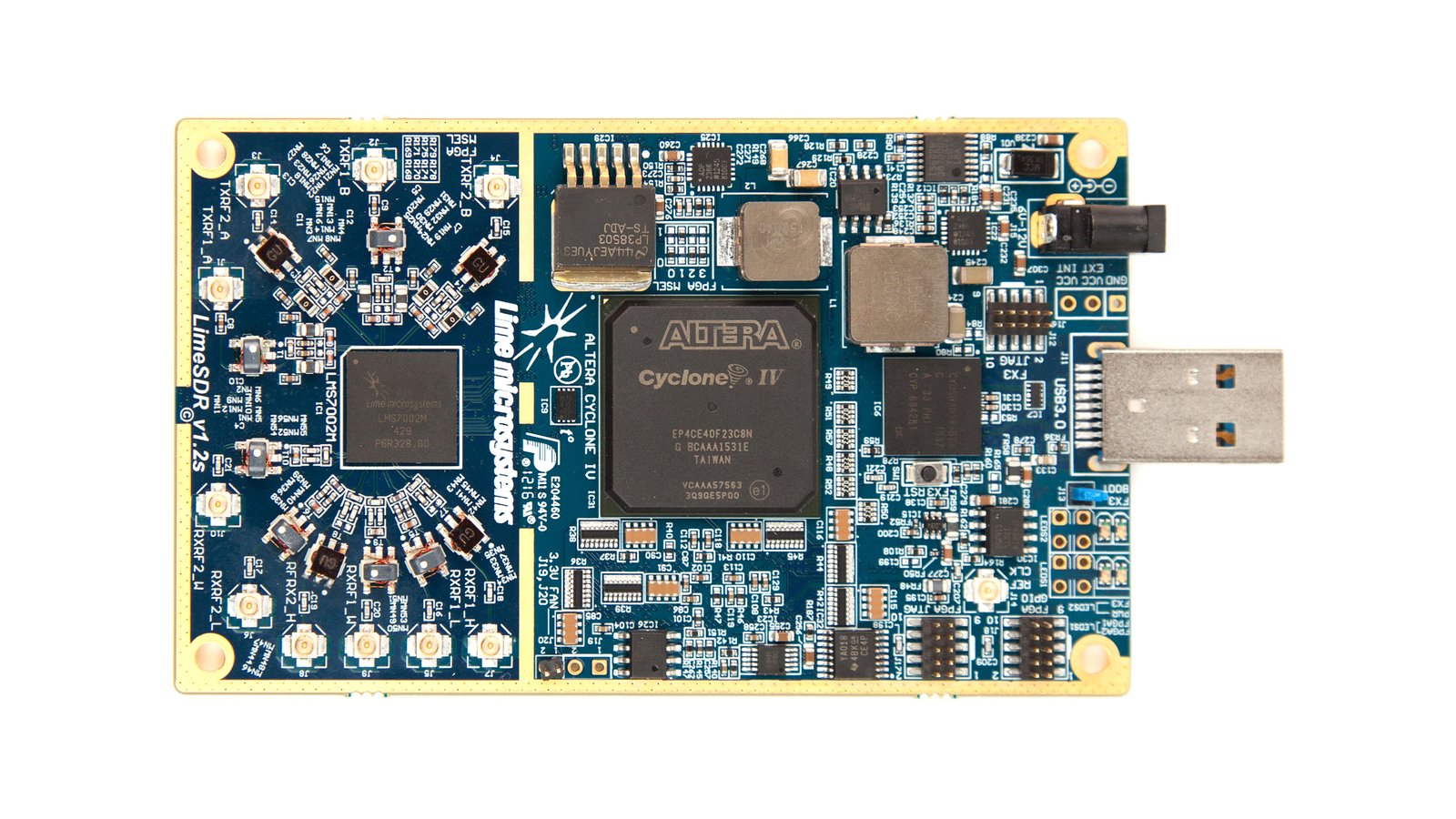
Flexible, next-generation, open source software-defined radio